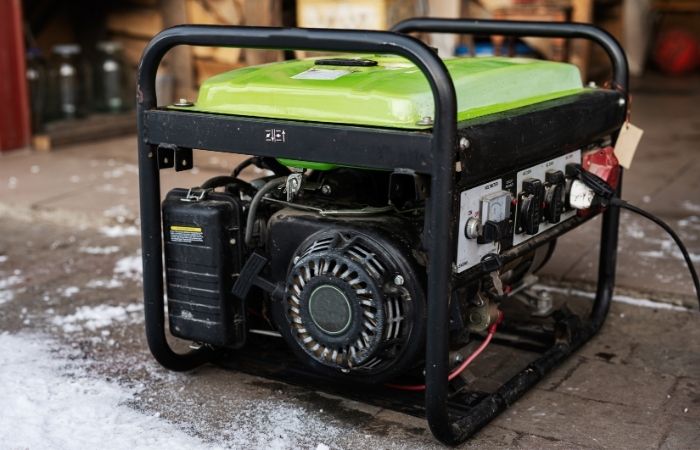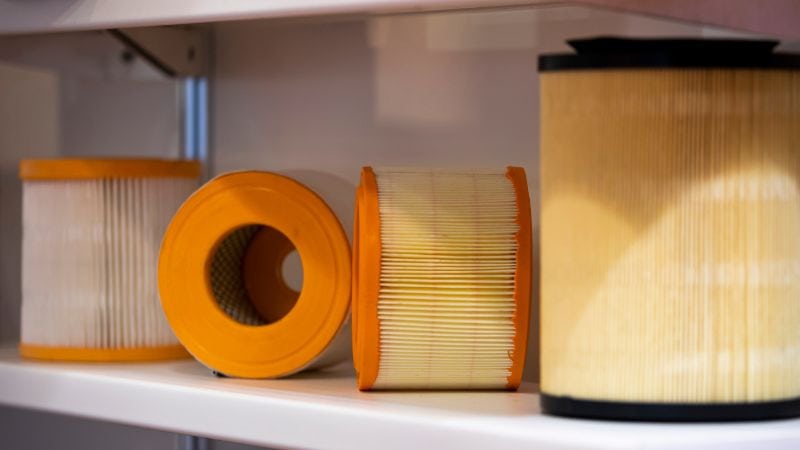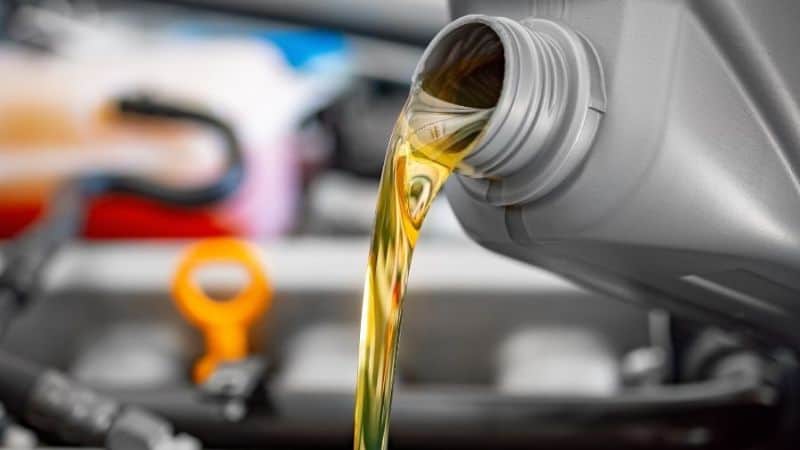When you need your generator most, nothing is more frustrating than pressing the start button and getting nothing.

Your generator has basic systems that work together to create power. When one component fails, the entire unit may cease operation. Now, you’re probably eager to find out what’s causing the issue.The good news is that most starting problems are simple to fix once you know what to look for.
The following outlines 15 main reasons why your generator fails to start. Most issues can be solved with basic tools and a few minutes of troubleshooting.
Fuel Problems
Most generator starting issues come from gas problems. Your generator needs clean fuel and a clear path for it to reach the engine.
Empty Fuel Tank
Check your fuel gauge or remove the fuel cap to look inside the tank. Many generators won’t show obvious signs when the tank is empty.
Even if you think there’s fuel left, the tank might be lower than you expect. Generators use more fuel than people realize, especially under heavy loads.
Always keep extra fuel on hand during power outages. Store gasoline in approved containers away from heat sources.
Stale or Bad Fuel
Gasoline goes bad after 30 days without a fuel stabilizer. Old fuel turns into a thick, sticky substance that clogs your generator’s fuel system.
Signs of bad fuel include:
- Strong varnish smell
- Dark color instead of clear yellow
- Thick, syrupy texture
- Visible particles or sediment
Replace with fresh gasoline and add fuel stabilizer if you plan to store the generator. This prevents future fuel problems and extends storage life to 12 months.
Clogged Fuel Filter
Your fuel filter catches dirt and debris before they reach the engine. A dirty filter blocks fuel flow and prevents starting.
Locate the fuel filter between the fuel tank and carburetor. It looks like a small plastic or metal cylinder with fuel lines on both ends.
Remove the filter and hold it up to the light. You should see light passing through clearly. If it looks dark or blocked, replace it immediately.
Change the fuel filter every 100 hours of use or once per year, whichever comes first.
Fuel Valve Closed
The fuel valve controls gasoline flow from the tank to the engine. This valve must be in the “ON” or “OPEN” position for your generator to start.
Look for a small lever or knob near the fuel tank connection. The valve position should be clearly marked with “ON/OFF” or “OPEN/CLOSED” labels. Some generators have multiple fuel valves. Check each one to make sure they’re all open.
Always turn the fuel valve OFF when storing your generator. This prevents fuel from leaking into the carburetor and causing damage.
Electrical & Battery Issues
Electric start generators depend on working electrical parts and a good battery to turn the engine on.
Dead or Weak Battery
A dead or weak battery is the most common reason electric start generators won’t turn over.
Test your battery with a multimeter. A good 12-volt battery should read 12.6 volts or higher when not running. Anything below 12.4 volts is weak and below 12 volts is dead.
If your battery is weak, try starting with the pull cord if your generator has one. This can add a charge back to the battery while running.
Signs of battery problems:
- Clicking sound when you press start
- Slow cranking that gets weaker
- No sound at all when starting
- Dim lights on the control panel
Replace batteries that are over 3-4 years old or won’t hold a charge. Keep your battery charged during storage by running the generator monthly or using a trickle charger.
Corroded Battery Terminals
Battery terminals collect white or green buildup over time. This corrosion blocks the flow of power from the battery to the starter.
Remove the battery cables and clean both terminals with a wire brush. Mix baking soda with water to neutralize acid buildup. Scrub until you see clean metal.
Clean the cable ends too. They should fit tightly on the terminals without wiggling. Loose connections cause weak starting power.
Put the positive cable back first, then the negative. Coat terminals with petroleum jelly to prevent future corrosion.
Blown Fuse or Tripped Circuit Breaker
Generators have fuses or circuit breakers that protect electrical parts from damage. These safety devices cut power when they detect problems.
Check your generator’s fuse box or electrical panel. Blown fuses look black inside or have broken metal strips. Tripped breakers sit between the on and off positions.
Replace blown fuses with the exact same amp rating. Never use higher amp fuses.
Reset tripped breakers by pushing them fully off, then back to on. If they trip again right away, you have a bigger electrical problem.
Ignition & Spark Issues
Your generator needs a strong spark to ignite the fuel mixture.
Faulty Spark Plug
A worn or damaged spark plug is one of the most common reasons why generators fail to start.
Signs of a bad spark plug:
- Black carbon buildup on the metal electrode
- Cracked white ceramic insulator
- Burned or corroded metal parts
- Oil or fuel deposits on the plug
Remove the spark plug and inspect it closely. Clean off any carbon buildup with a wire brush or sandpaper. Check the gap between the electrodes with a feeler gauge. Most small generators need a gap of 0.028 to 0.031 inches. If the ceramic is cracked or the metal is badly damaged, replace the spark plug.
Ignition Coil Failure
The ignition coil converts low voltage from the generator into high voltage for the spark plug. When it fails, you get no spark at all.
Test for spark by removing the spark plug and reconnecting the spark plug wire. Hold the plug against the engine block and pull the starter cord. You should see a blue spark jump across the electrodes. No spark means the ignition coil may be bad.
Ignition coils rarely fail suddenly. They usually weaken over time, making starting harder before they quit completely.
Common ignition coil problems:
- Overheating from blocked cooling fins
- Water damage from storage
- Age-related wire breakdown
- Physical damage from vibration
Air & Combustion Problems
Your generator needs the right mix of air and fuel to start properly.
Clogged Air Filter

A dirty air filter blocks air from reaching your carburetor. Without enough air, your generator cannot create the proper fuel mixture for combustion.
Check your air filter before each use. Remove the air filter cover and pull out the filter element. Clean foam filters with warm, soapy water. Rinse thoroughly and let dry completely. For paper filters, tap gently to remove loose dirt or replace if heavily soiled.
Replace your air filter every 50 hours of use or once per season. A clean filter improves airflow and helps your engine start more easily. It also protects internal parts from dirt damage.
Choke Set Incorrectly
The choke controls how much air mixes with fuel during startup. Wrong choke settings cause starting problems.
Move the choke lever slowly while trying to start. Listen for changes in engine sound. Once your generator starts, gradually open the choke as the engine warms up.
- Cold engine: Set choke to CLOSED or START position. This reduces air flow and creates a richer fuel mixture for easier starting.
- Warm engine: Set choke to OPEN or RUN position. A warm engine needs more air in the fuel mixture.
Never leave the choke closed after startup. This wastes fuel and can damage your engine.
Carburetor Dirty
Your carburetor mixes air and fuel in the right amounts. Old fuel leaves deposits that clog tiny passages inside the carburetor.
Remove the air filter and look into the carburetor throat. Spray carburetor cleaner while the engine is off. Use the cleaning straw that comes with the spray can. Try restarting your generator after cleaning. Still won’t start? You may need to remove and fully clean the carburetor.
Prevention tips: Run your generator dry before long-term storage.
Mechanical & Safety Issues
Generators have built-in safety features and mechanical components that can prevent startup when something goes wrong.
Low or Dirty Engine Oil
Your generator’s oil sensor or oil pressure switch will shut down the engine if oil levels get too low. This protects expensive internal parts from damage.
Check your oil level using the dipstick. The oil should reach the full mark when the generator sits on level ground. Add the correct type of oil if levels are low.

Oil change schedule:
- Every 50 hours of use
- Every 6 months if used infrequently
- After first 20 hours on new generators
Dirty oil looks black or contains metal particles. Clean oil appears amber or light brown. Change the oil if it looks contaminated.
Overloaded Generator
Running too many devices can trip your generator’s circuit breaker. Calculate your total wattage needs before starting. Don’t exceed 80% of your generator’s rated capacity.
Common power draws:
- Refrigerator: 600-800 watts
- Space heater: 1,200-1,500 watts
- Microwave: 1,000-1,200 watts
- LED lights: 10-20 watts each
Remove some devices if you’re overloaded. Start with high-wattage items like heaters or power tools. Reset any tripped breakers before trying to start. Look for breaker switches in the off position. Flip them back on.
Safety Sensors Issues
Modern generators have multiple safety sensors that prevent startup when conditions aren’t safe. These sensors can malfunction and stop a perfectly good generator from running.
The low oil sensor might give false readings if it gets dirty or damaged. Replace it if cleaning doesn’t help.
Carbon monoxide detectors on some models will shut down the generator if CO levels get too high. Make sure you’re running the generator in a well-ventilated area at least 20 feet from windows and doors.
Temperature sensors prevent overheating damage. If your generator ran hot recently, let it cool completely before trying to restart.
Conclusion
Now you’ve learned about some of the basic reasons why the generator isn’t working, but if you check these common issues and your generator still won’t start, you might need professional help. Some problems require special tools or parts that are hard to fix yourself.
Keep your generator manual handy. It has specific instructions for your model that can save you time and trouble.
